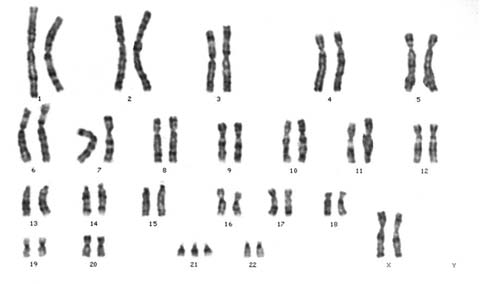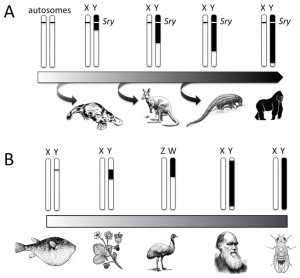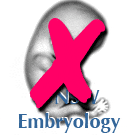User:Z3460352: Difference between revisions
No edit summary |
No edit summary |
||
| Line 107: | Line 107: | ||
_________________________________________________________________________________________________________________________________________ | _________________________________________________________________________________________________________________________________________ | ||
==Lab 4 Assessment - ''Example''== | |||
[[File:Logo-quizz.gif|right]] | |||
Here are a few simple questions that relate to your introduction to embryology lecture and practical, this page is not a part of today's Practical class. | |||
'''You should try in your own time after completing the Practical today.''' | |||
==Take the Quiz== | |||
<quiz display=simple> | |||
{I already really know all I need to know about embryology. | |||
|type="()"} | |||
- true | |||
+ false | |||
|| If you said '''true''', how can that be, as we have not yet begun to explore this topic in detail. You clearly don't understand enough to even answer this first question correctly. | |||
{Which of the following statements is most correct about the human menstrual cycle. | |||
|type="()"} | |||
- The menstrual cycle in all women is a 28 day reproductive cycle | |||
- Ovulation always occurs at the midpoint of the menstrual cycle | |||
- The menstrual cycle's main function is to regularly replace the lining of the uterus | |||
- A high body temperature indicates ovulation is occurring | |||
+ The menstrual cycle is an endocrine cycle regulating reproductive physiological changes | |||
||The menstrual cycle is variable amongst women and also within an individual, the "28 days" is an average time course. Like the cycle itself, the time of ovulation can vary anywhere between day 10 - day 19. The uterine lining (functional layer) is replaced ever cycle, though this would not be considered the main function of the cycle. The body temperature does increase at ovulation, but it remains high even after this point, it is the time of change that indicates ovulation. | |||
{Most pregnancies can be detected by pregnancy tests soon after fertilization. | |||
|type="()"} | |||
- true | |||
+ false | |||
|| Following fertilization, at least 1 to 2 weeks of development must occur before implantation commences, it is only after implantation that regnancy tests work. | |||
{Which of the following statements is correct about the zona pellucida: | |||
|type="()"} | |||
- surrounds the oocyte in the ovary | |||
- protects oocyte in the uterine tube | |||
- is a specialized extracellular matrix | |||
- is important for fertilization | |||
+ all of the above | |||
||Yes, the [[Z#zona pellucida|zona pellucida]] has many different functions at different times of oocyte development, fertilization and in the first week of development. | |||
{Pregnancy tests generally are based upon the detection in maternal urine of: | |||
|type="()"} | |||
- Estrogen | |||
- Progesterone | |||
- human Chorionic Somatommotropin | |||
+ human Chorionic Gonadotrophin | |||
- human Chorionic Corticotropin | |||
||Estrogen and Progesterone are made in the ovary and support the endometrium. human Chorionic Somatommotropin (or placental lactogen, stimulate maternal mammary development) and human Chorionic Corticotropin are both made by the placenta later in development. | |||
{The most correct sequence of early development following fertilization is: | |||
|type="()"} | |||
+ zygote, blastomeres, morula, blastocyst | |||
- oocyte, zygote, morula, blastocyst | |||
- zygote, conceptus, blastocyst | |||
- polar bodies, zygote, conceptus, blastocyst | |||
||The '''oocyte''' is present before fertilization, the '''conceptus''' refers to all the products of fertilization and is not a developmental stage, '''polar bodies''' are small exclusion bodies enclosing the excess DNA from oocyte meiosis. I did not discuss in detail '''blastomeres''' a term often used to describe the first cells formed from zygote mitosis. | |||
{Which process in the third week of development converts the embryonic disc into the trilaminar embryo. | |||
|type="()"} | |||
- placentation | |||
+ gastrulation | |||
- neuralation | |||
- somitogenesis | |||
- embryonic disc folding | |||
||Gastrulation, meaning gut formation, converts the early embryonic disc into the trilaminar or 3 germ layer embryo (ectoderm, mesoderm, endoderm). | |||
{The second and third trimesters cover the fetal period of development. | |||
|type="()"} | |||
+ true | |||
- false | |||
|| The second and third trimesters are the period of fetal (foetal) development. Yes I know, in the first trimester after week 8, this is also the early fetal period. | |||
{Which of these statements about environmentally derived abnormal development is incorrect: | |||
|type="()"} | |||
- bacterial and viral infections can sometimes not affect development | |||
+ a specific environmental insult will result in a specific abnormal development outcome | |||
- the first trimester is the most sensitive period to environmental insults | |||
- some prescription drugs can lead to abnormal development outcomes | |||
- rubella virus infection during pregnancy has serious abnormal development outcomes | |||
||While we know that "specific environmental insults" can be associated with defects in specific systems, there are many other variables (time, dose, maternal status, synergistic and antagonistic factors, other) which can affect the final developmental outcome. | |||
{Which of the following statements about Figure 1 (shown below) is most correct: | |||
|type="()"} | |||
- figure 1 shows a normal female karyotype | |||
- figure 1 shows all human chromosomes | |||
+ figure 1 shows a metaphase spread of a human genome | |||
- figure 1 shows an abnormality of mitosis | |||
||This is a metaphase spread of a female with [[Trisomy 21|trisomy 21]] (Down syndrome), though abnormal it is still a human genome (just not the normal human genome). It is not the normal female karyotype (number and appearance of chromosomes) and does not show the Y chromosome (as this is female XX). This is the most common human genetic abnormality and the additional chromosome is thought to occur due to incorrect meiosis. | |||
</quiz> | |||
{| border='0px' | |||
|- | |||
| [[File:Trisomy21female.jpg|500px|Figure 1]] | |||
|- | |||
| '''Figure 1''' | |||
|} | |||
{{Template:FoundationLab}} | |||
[[Category:Quiz]] [[Category:Medicine]] [[Category:Foundations]] | |||
_______________________________________________________________________________________________________________________________________________________________________________________________________________________________ | |||
{{StudentPage2015}} | {{StudentPage2015}} | ||
Revision as of 13:48, 28 August 2015
Lab Attendance
--Z3460352 (talk) 13:45, 7 August 2015 (AEST)
--Z3460352 (talk) 12:22, 14 August 2015 (AEST)
--Z3460352 (talk) 13:33, 21 August 2015 (AEST)
--Z3460352 (talk) 12:44, 28 August 2015 (AEST)
Week 1 Lab Assessment
Chromosomal Development in relation to Blastocyst Morphology
Figueira, Setti, Braga, Laconelli and Borges aimed to decipher the link between embryo morphology and chromosomal development in the early days of fertilisation. Specifically, the study focused on the structure of chromosomes within the embryo at day three of development.
For the purpose of the experiment, Intra-Cytoplasmic Sperm Injection (ICSI) cycles were run 106 times, before a genetic screening test was completed (PGS, Pre-Implantation Genetic aneuploidy Screening). This presented 596 embryos for use. Embryonic growth was monitored closely and the genetic composition of each cell was analysed. Fluorescent In Situ Hybridisation (FISH) was used to analyse the complementary sequences of DNA within the embryos; 200 of the 564 tagged had developed into blastocysts.
Approximately 59% of the blastocysts were euploid (having an even set of chromosomes), whereas a lesser proportion of embryos that had not become blastocysts were euploid (41.2%). Furthermore, abnormalities in blastocyst development were observed, finding that if an embryo was an euploid, it would most likely have a normal inner cell mass (ICM). In contrast, aneuploid embryos (those with an abnormal set of chromosomes, generally 45 or 47) were found to be those with abnormal ICMs. A similar conclusion was found in the observation of trophectoderm morphology in that euploid embryos had a ‘normal’ cell distribution, whereas aneuploids did not.
Based on these findings, the study concluded that embryo development is not hindered by genetic abnormalities in the early stages of development. However, ICM morphology presents a stronger link to chromosomal abnormalities as the majority of aneuploidy embryos had irregular ICMs. Although this study presented clear links between embryonic development and genetic abnormalities, further studies could be conducted to strengthen these connections.
PMID 26246880
Reference [1]
In Vitro Fertilisation in women with, and without Polycystic Ovarian Syndrome
This study, completed by Siristatidis, Sergentanis, Vogiatzi, Kanavidis, Chrelias, Papantonious and Psaltopoulou, was aimed at evaluating the outcomes of In Vitro Maturation (IVM) in women with polycystic ovarian syndrome (PCOS) versus women without PCOS, undergoing In Vitro Fertilisation (IVF). Past studies were utilised by the researchers for comparison, and were kept strictly to human experiments (not animals). Possible IVF outcomes across these studies were compared, including implantation, clinical pregnancy, cycle cancellation, oocyte maturation, oocyte fertilisation, live birth or miscarriage, in both PCOS and non-PCOS individuals. A large emphasis was placed on the number of successful births per patient, per cycle.
Due to the fact that the sources collected in this study were qualitative in nature, the researchers employed the Newcastle Ottawa Quality scale. This is a nine item scale used to analyse the experiments of interest, and to organise them into order of reliability. Additionally, confidence interval and statistical analysis schemes (using 95% confidence intervals and STATA Software, respectively) were developed to further evaluate the pattern of live births and clinical pregnancies. A total of eleven studies were examined; 268 PCOS (328 cyles), 100 PCO (110 cycles) and 440 control (480) women were involved.
It was found that when PCOS patients were administered with both follicle stimulating hormone (FSH) and hCG, a higher rate of clinical pregnancies was observed. In the absence of hCG, the birth rates did not differ across the three groups. The experiments were organised into two groups; a cycle study and a women's study. In the cycle study, live birth rates did not differ greatly between the PCOS and non-PCOS groups, whereas in the women’s experiment, the birth rate for PCOS patients was slightly higher. When comparing the cycle and women’s experiment, once again PCOS patients presented greater birth and implantation rates. PCOS patients only presented lower rates than non-PCOS individuals in the fertilisation and cancellation studies. In terms of miscarriages, the rates were consistent across all three groups.
This study is significant in that drew upon the work of numerous researchers from various years, comparing their reliability and conclusions. Generally, it was found that more recent studies were of greater reliability, and therefore presented a higher score on the Newcastle Ottawa Quality scale. Siristatidis et al. came to the conclusion that IVM has a positive impact on the birth rate of PCOS women, in comparison to non-PCOS patients.
PMID 26241855
Reference [2]
_______________________________________________________________________________________________________________________________________________________________________________________________________________
--Mark Hill (talk) 19:21, 27 August 2015 (AEST) these are good summaries of these papers. You could try and format the pubmed reference correctly by having ll on the same line. (5/5)
Week 2 Lab Assessment
| Uploading Images in 5 Easy Steps | ||
|---|---|---|
First Read the help page Images and Copyright Tutorial.
Students cannot delete images once uploaded. You will need to email me with the full image name and request deletion, that I am happy to do with no penalty if done before I assess. Non-Table version of this page
|
<pubmed>4983465</pubmed>|PLoS Biol.
--Mark Hill (talk) 19:21, 27 August 2015 (AEST) Image uploaded correctly with all required information. Note when added to your own page you require <ref></ref> tags outside the PubMed ref to have it appear correctly. (5/5)
Week 3 Lab Assessment
--Mark Hill (talk) 19:21, 27 August 2015 (AEST) These references relate to your group project. (5/5)
TREATMENT OF FEMALE INFERTILITY (Group 3)
The Effect of a Complex Multi-modality Ayurvedic Treatment in a Case of Unknown Female Infertility
This article documented a 38 year old woman's journey to giving birth, after she was advised that she was infertile (of unknown cause). The researchers detail the various modern day medical treatments she underwent to become pregnant, all of which were unsuccessful. She then decided to try holistic medicine in the form of Ayurvedic treatment, which consisted of meditation, a controlled diet and yoga. To the researchers' surprise, she became pregnant soon after, and gave birth to a healthy baby boy in 2012. The study comes to the conclusion that Ayurvedic medicine and successful birth rates do not show a strong correlation, and thus should not be favoured over standard medical treatments. However, they did state that holistic medicine could improve the overall wellbeing of the mother (in terms of stress and diet), which in turn increases the chances of becoming pregnant.
<pubmed>26278074</pubmed>
* * *
Pregnancy Rate after Controlled Ovarian Hyperstimulation and Intrauterine Insemination for the Treatment of Endometriosis following Surgery
This study investigated various treatments available for women with endometriosis, and the rate of successful pregnancies and births in patients following their treatment. The researchers came to the conclusion that a woman's chances of becoming pregnant increased following laparoscopic surgery, particularly in the first six months following the procedure. If pregnancy does not occur, controlled ovarian hyperstimulation and intrauterine insemination (COH-IU) should be the next option, due to its success rates.
<pubmed>26247014</pubmed>
* * *
Time-limited Hydrotubation Combined with Clomiphene Citrate Treatment for Unexplained Infertility
In this experiment, 80 random patients with "unexplained inferility" were selected and treated with hydotrubation and clomiphene citrate (CC). Of the 80 patients, 15 became pregnant, with the researchers concluding that combined hydrotubation and CC treatment increased a woman's chance of becoming pregnant to a greater degree than just CC alone. Further tests need to be completed to strengthen the correlation between the treatment and outcome.
<pubmed>26152000</pubmed>
* * *
Frequency and Outcome of Treatment in Polycystic Ovaries Related Infertility
This study examined treatments available to women with Polycystic Ovarian Syndrome (PCOS). It came to the conclusion that in overweight women with PCOS, weight loss, exercise and better lifestyle choices are the best treatments as they significantly increases pregnancy rates. Furthermore, clomiphene citrate (CC) and metformine combined treatments are highly effective in PCOS women, and should be one of the first options offered to a patient.
<pubmed>26150870</pubmed>
_________________________________________________________________________________________________________________________________________
Lab 4 Assessment - Example
Here are a few simple questions that relate to your introduction to embryology lecture and practical, this page is not a part of today's Practical class.
You should try in your own time after completing the Practical today.
Take the Quiz

|
| Figure 1 |
Foundations Practical: Introduction | Week 1 and 2 | Week 3 and 4 | Week 1 to 8 | Week 9 to 36 | Neonatal | Critical Periods | Additional Resources | Quiz
Glossary: A | B | C | D | E | F | G | H | I | J | K | L | M | N | O | P | Q | R | S | T | U | V | W | X | Y | Z | Numbers
Cite this page: Hill, M.A. (2024, May 19) Embryology Z3460352. Retrieved from https://embryology.med.unsw.edu.au/embryology/index.php/User:Z3460352
- © Dr Mark Hill 2024, UNSW Embryology ISBN: 978 0 7334 2609 4 - UNSW CRICOS Provider Code No. 00098G
_______________________________________________________________________________________________________________________________________________________________________________________________________________________________
Please do not use your real name on this website, use only your student number.
- 2015 Course: Week 2 Lecture 1 Lecture 2 Lab 1 | Week 3 Lecture 3 Lecture 4 Lab 2 | Week 4 Lecture 5 Lecture 6 Lab 3 | Week 5 Lecture 7 Lecture 8 Lab 4 | Week 6 Lecture 9 Lecture 10 Lab 5 | Week 7 Lecture 11 Lecture 12 Lab 6 | Week 8 Lecture 13 Lecture 14 Lab 7 | Week 9 Lecture 15 Lecture 16 Lab 8 | Week 10 Lecture 17 Lecture 18 Lab 9 | Week 11 Lecture 19 Lecture 20 Lab 10 | Week 12 Lecture 21 Lecture 22 Lab 11 | Week 13 Lecture 23 Lecture 24 Lab 12 | 2015 Projects: Three Person Embryos | Ovarian Hyper-stimulation Syndrome | Polycystic Ovarian Syndrome | Male Infertility | Oncofertility | Preimplantation Genetic Diagnosis | Students | Student Designed Quiz Questions | Moodle page

